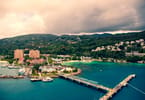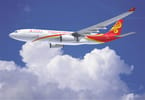Promoting SAF
The most practical near-term solution to reducing emissions is SAF. Energy transitions are successful when production incentives drive down the price of alternative fuels while driving supplies up. The EU ‘Fit for 55’ proposal does not include direct measures that will achieve this. Without specific measures to reduce SAF costs, it does, however, propose a mandate to increase SAF utilization to 2% of jet fuel use by 2025 and at least 5% by 2030.
“Making SAF cheaper will accelerate aviation’s energy transition and improve Europe’s competitiveness as a green economy. But making jet fuel more expensive through taxation scores an ‘own goal’ on competitiveness that does little to accelerate the commercialization of SAF,” said Walsh.
Mandating a gradual transition to SAF is a less efficient policy compared to comprehensive production incentives, but it may contribute to making SAF more affordable and widely available in Europe, but only under the following key conditions:
- It is limited to EU-only flights. This will limit the negative impacts on the competitiveness of European air transport and potential political challenges from other countries.
- It is accompanied by policy measures to ensure a competitive market and appropriate production incentives. The mandated use of SAF must not allow energy companies to engage in uncompetitive practices with the resulting high costs being borne by airlines and passengers.
- It is targeted at locations which have substantial airline operations and close proximity to SAF refineries.

















![Čínský vlak Hyperloop: Pohled do budoucnosti dopravy 15 Travel Tourism News | Domácí a mezinárodní Hyperloop Train China [Foto: Hyperloop Transportation Technologies]](https://eturbonews.com/cdn-cgi/image/width=145,height=100,fit=crop,quality=80,format=auto,onerror=redirect,metadata=none/wp-content/uploads/2024/02/180720163348-hyperlooptt-china-capsule.jpg)




